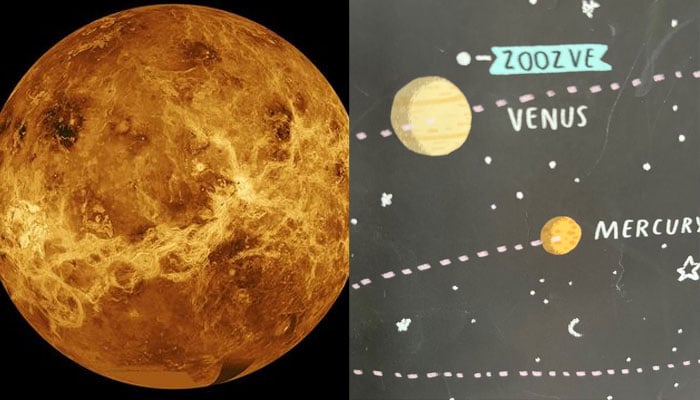Zoozve: Unraveling the tale of Venus' accidentally mamed Quasi-moon
Latif Nasser of Radiolab embarked on journey to unravel mystery behind this whimsically named celestial body
February 07, 2024

Around a year ago, Latif Nasser, co-host of Radiolab and executive producer of the science documentary series Connected, stumbled upon a peculiar discovery while tucking his son into bed – an unnoticed quasi-moon of Venus named Zoozve on a solar system poster.
Intrigued, Nasser embarked on a journey to unravel the mystery behind this whimsically named celestial body.
Despite his background in the History of Science from Harvard and extensive involvement in science communication, Nasser was astonished that he had never heard of Zoozve. After online research, it became clear that Venus had no officially recognised moons.
Determined to solve the puzzle, Nasser sought the help of NASA's Senior Communications Specialist, Liz Landau, only to discover that even she was unaware of Zoozve.
The quest to demystify Zoozve led Nasser to the poster's illustrator, Alex Foster, who had unintentionally given the quasi-moon its peculiar name. Through a twist of fate and a collaborative effort involving Nasser, his Radiolab team, and key scientists such as Brian Skiff, the quasi-moon has now been officially named 524522 Zoozve by the International Astronomical Union.
The journey to name Zoozve involved unexpected twists and turns, including encounters with scientists Seppo Mikkola and Paul Wiegert, who added depth and drama to the narrative.
The story resonated with the IAU's "The Executive Committee WG Small Bodies Nomenclature" board, leading to the exception of the mythological naming rule and the official christening of Zoozve.
The accidental discovery of Zoozve, its subsequent naming, and the joy it brought to the scientific community reflect the human desire for connection, even with the seemingly distant and enigmatic elements of the cosmos.
The story highlights the unpredictability of celestial objects, mirroring the unpredictability of life itself, as told through the lens of a quirky quasi-moon named Zoozve.









